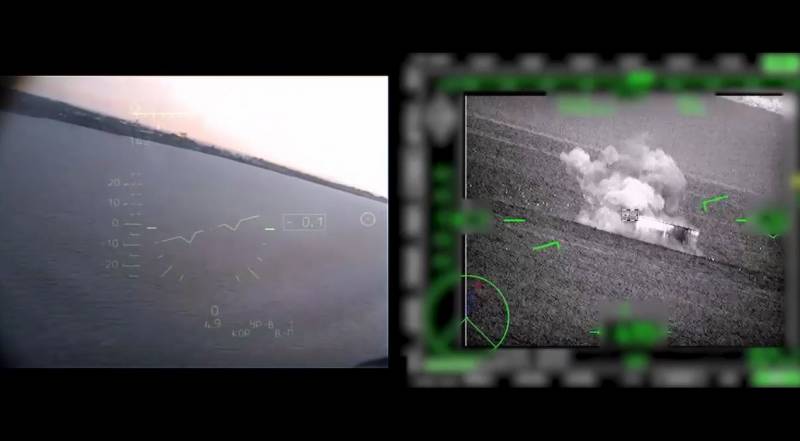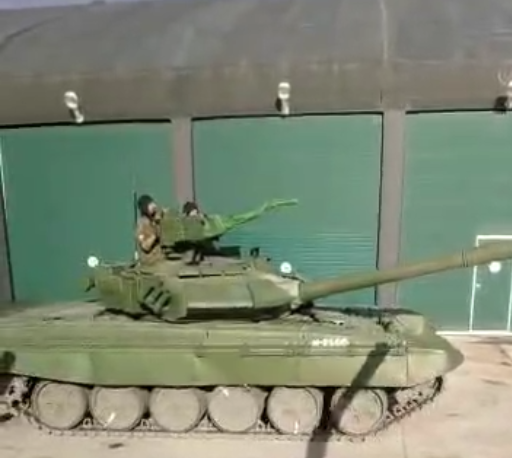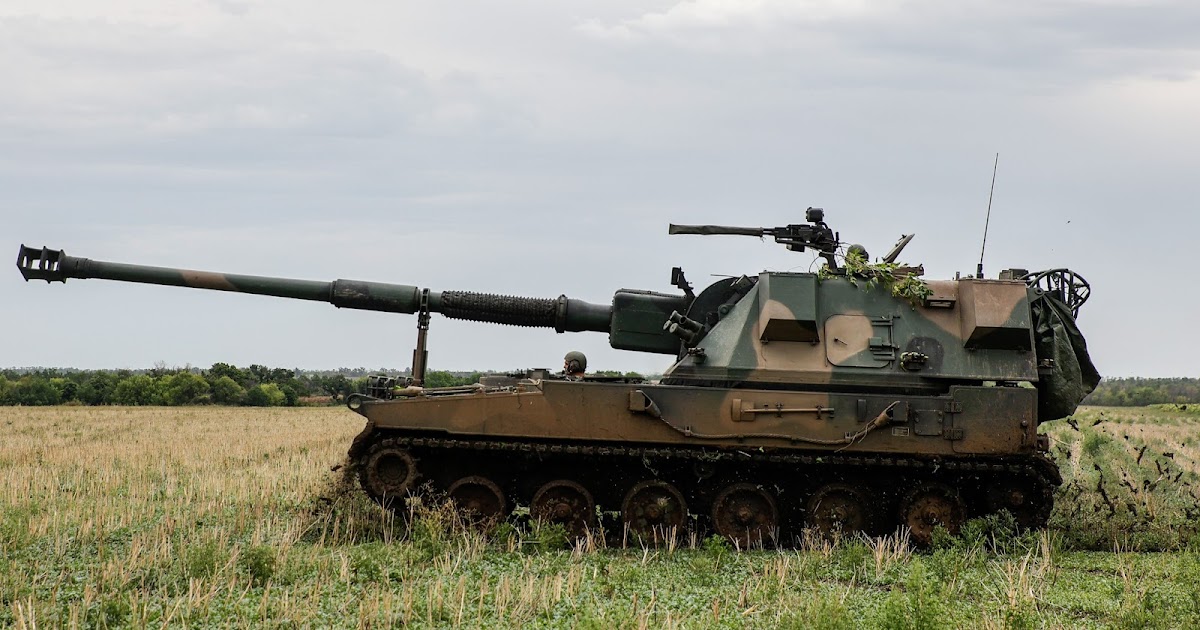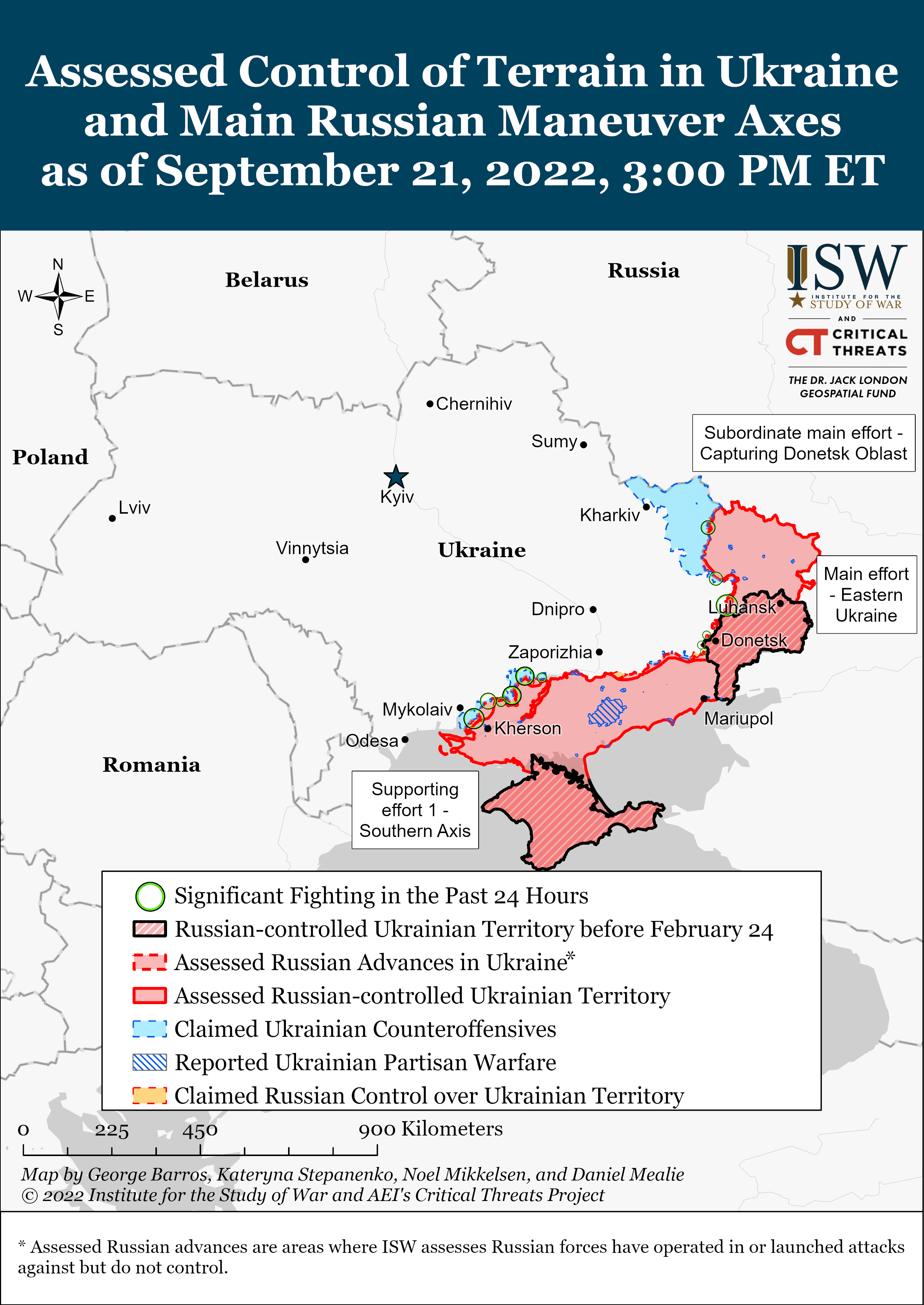Update.
Kherson-Nikolaev-Krivoy Rog.
Ukrainian strikes against the Kahovskaya dam.

vk.com
Russian strikes on Nikolaev.

vk.com
Из Херсонской области ВС РФ запускают ракет. В Николаеве звучат взрывы.

t.me
Russian strikes on Krivoy Rog.
Взрыв в Кривом Роге. Также украинские источники сообщают о взрывах в районе Умани и Винницы.

t.me
Apparently a Ukrainian BRM-1K getting destroyed with a roof-dropped grenade.

vk.com
Уничтожение украинской БРМ-1К при помощи дрона с нехитрым приспособлением для сброса гранаты Ф-1, Херсонское направление. Эксклюзив от воинов-подписчиков. @milinfolive

t.me
HARM fragments, Kherson region. Unclear if downed or fell on its own.

vk.com
Обломки сбитой американской противорадиолокационной ракеты АGM-88 HARM в Херсоне.

t.me
Zaporozhye-Dnepropetrovsk.
Allegedly footage of Russian K-52s sinking a barge with troops from Nikopol' heading to Energodar. This is in regards to the earlier Russian claim of a Ukrainian landing attempt. Note, while we can see a barge getting shot up, there's no sign of troops on it.
Уничтожение баржи с десантом вышедшей из района Никополя в направлении Энергодара. Отработал ударный вертолет Ка-52.

t.me
Министерство обороны продолжает публикацию видео о работе российских военных в рамках специальной военной операции на Украине. На этот раз военные показали кадры уничтожения баржи с украинским десантом, пытавшимся высадиться в районе Запорожской АЭС и захватить станцию. Как сообщили в Минобороны,

topwar.ru
Reportedly a failed Ukrainian attack near Orekhovo. We have a knocked out T-64BV.

vk.com
Oskol Front.
Russia apparently lost another BMO-T on the Oskol front.

gurkhan.blogspot.com
LDNR Front.
Shelling of Donestk continues.
Обстрел улицы 50-летия СССР, дом 24 Ворошиловского района Донецка два часа назад - один человек поиб. Объективная информация, встречи с очевидцами и участниками событий, аналитика - подписаться на канал Максима Григорьева.

t.me
LNR 4th Bde using 2S4s to hit Ukrainian positions. We can then see a Ukrainian CASEVAC on a BMP-1. It's an interesting question why they didn't hit the BMP-1.

vk.com
Allegedly Kaskad btln dropping improvised munitions on a Ukrainian Osa SAM and ZU-23-2 position. I can't really make out what they're hitting.

vk.com
Russian strikes, allegedly Krasnopol', against a Ukrainian howitzer near Ugledar.

vk.com
Два выстрела, две цели. И всё благодаря корректировки с воздуха. Первая цель пушка, а вторая личный состав и бк спрятанное в лесопосадке. Угледарское направление

t.me
DNR forces have reportedly taken Mayorsk, near Gorlovka.
❗️#Майорск | #ДНР ★ 15.09.2022 Группировка войск ДНР и ЛНР при огневой поддержке ВС РФ освободила Майорск ⇢ https://t.me/TRO_DPR/7548 @militarymaps: militaryMaps.info/mark/id680065 https://militaryMaps.info?lat=48.3930803&lng=37.9767413&z=12&t=3

t.me
Battle damage in Krasniy Liman.
Глава Красного Лимана Александр Петрикин показал свежие разрушения в городе в результате обстрелов ВСУ. @sashakots

t.me
Russian Wagner mercenaries doing mine/UXO clearing on former Ukrainian positions near Artemovsk/Bakhmut.

vk.com
Russian regulars have reportedly joined BARS Kuban', and LNR units in Krasniy Liman.

vk.com
Russia.
Krasniy Hutor, Belgorod region, got hit. Reportedly locals are getting evacuated.

vk.com
A Russian border checkpoint in Nekhoteevka, Belgorod region got hit.

vk.com
Пожар в здании таможенного терминала в приграничной Нехотеевке после обстрела ВСУ.

t.me
It appears Russia is either pulling T-90As out of storage (some were in reserves) or pulling T-90S from an export contract. Or pulling the T-90S prototypes and putting into service.

gurkhan.blogspot.com

vk.com
Russian volunteers heading from Chechnya to Ukraine.

vk.com
Misc.
Russia hitting a Ukrainian pontoon crossing with a LMUR, possibly the Ingulets crossing in Kherson.

vk.com
Allegedly a breakdown of western artillery systems across Ukrainian units.
Artillery Bdes:
26th Bde: Krab – 53.; PzH2000 – 18. 40th Bde: М777 – 22. 44th Bde: М777 – 3.; FH-70 – 24. 45th Bde: М777 – 7. 55th Bde: М777 – 24.
Mech Bdes: 53th Bde: Caesar – 18. 14th Bde: М109 – 14. 28th Bde: М109 – 12. 72nd Bde: М109 – 2. 92nd Bde: М109 – 6.
Tank Bdes: 17th Bde: М109 – 12 ед.
4 М777 in the 184the Training Center.

gurkhan.blogspot.com
A look at how Ukraine is mounting their HARM missiles.

vk.com
Ukraine's Kovcheg mobile hospital has been sighted recently.
Мобильный госпиталь ВСУ Ковчег засветился на свежем видео За музыку извините :)

shusharmor.livejournal.com
A Russian Cossack volunteer unit (likely the Don Cossack Bde) with at least 15 BMP-2Ms and T-80BVs.

vk.com
Russian S-300V operations, Ukraine. Location and context unclear.

vk.com
NATO/EU.
Germany is reportedly supplying more 2 more MARS (M-270) MLRS, 4 more Gepards, 16 Biber bridge layers, and 50 Dingo armored cars.

gurkhan.blogspot.com

gurkhan.blogspot.com

vk.com
Finland apparently supplied XA-180/185 APCs to Ukraine.

vk.com
First confirmation of Ukrainian Dana-M2 howitzers.

vk.com
























